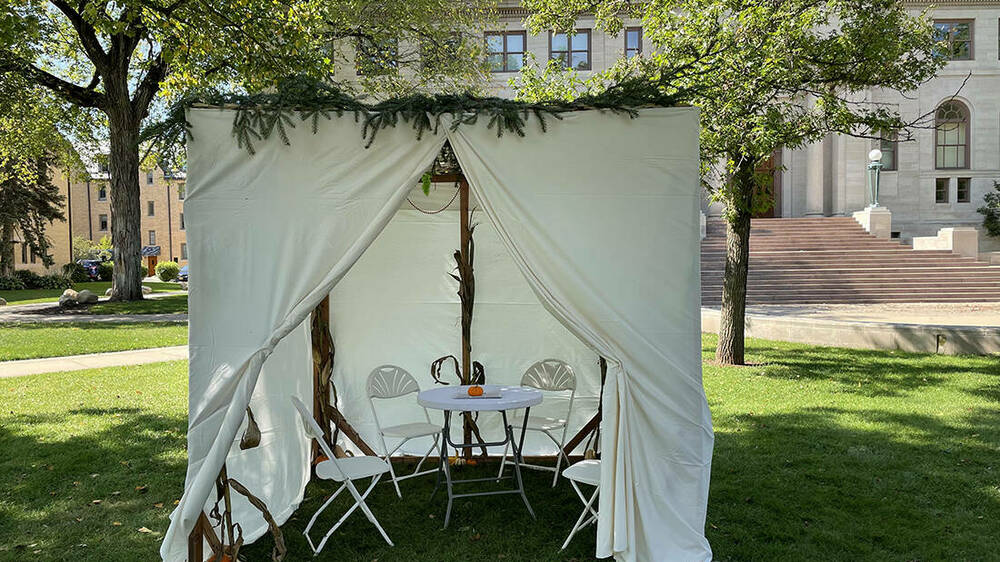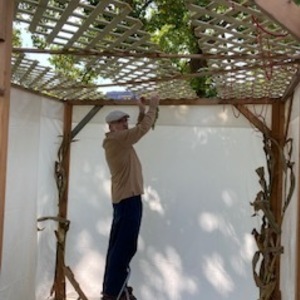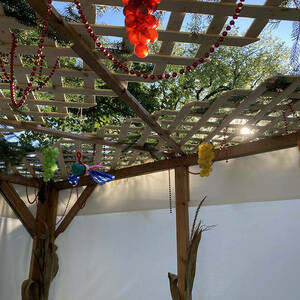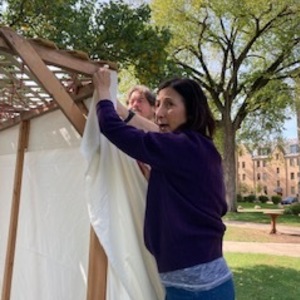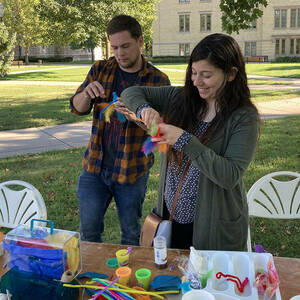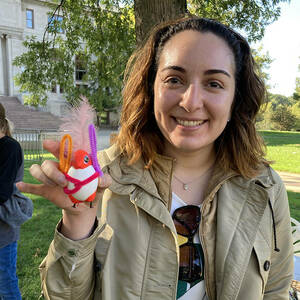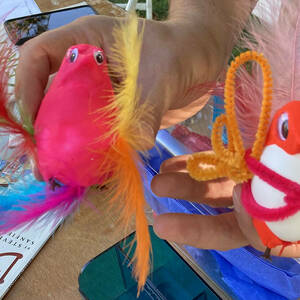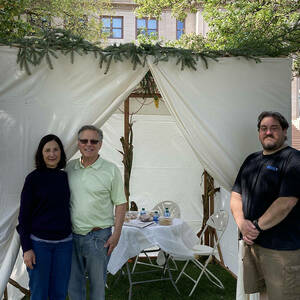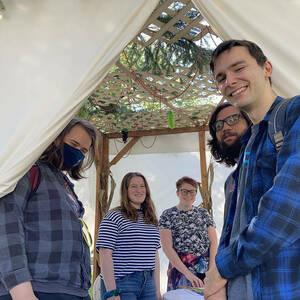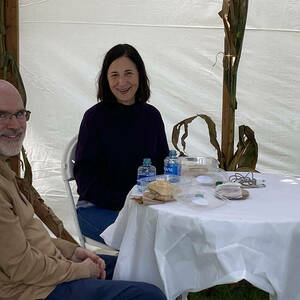“L’shana tovah u’metukah” translates to “A good and sweet year.”
This traditional salutation in Hebrew is one way to greet others on Rosh Hashanah, the Jewish new year, marked by the lunar calendar. This High Holiday ushers in other major holidays of the fall season — Yom Kippur, a holiday marking atonement, and Sukkot, which commemorates the exodus of the Israelites and the time of wandering in search of the Promised Land. It is this holiday that celebrates thanksgiving, bringing people together.
On a crisp fall day, members of the Notre Dame community including Campus Ministry, the Jewish Club of Notre Dame, the Jewish faculty and staff group and the Jewish Federation of St. Joseph Valley came together to build a sukkah in celebration of Sukkot.
The sukkah — a booth or a hut — is symbolic of the buildings that Jewish ancestors took shelter under during the Exodus. The three-sided structure they assembled was made of wood and unbleached muslin and pine branches, with the roof area mainly left open so one can see the stars. Originally belonging to Karen Richman, director of undergraduate studies in the Institute for Latino Studies, and her husband, Moshe Kruger, director of the Jewish Federation, the sukkah was erected under trees outside Bond Hall with the help of Rev. Frank Murphy, C.S.C., the faculty chaplain, and others.
Known today as a harvest festival, Sukkot celebrates the “bounty of the earth.” The celebration is part of a cycle of fall holidays that begin with Rosh Hashanah and end with Simchat Torah. All together, the four holidays signal the ending of the year-long reading of the Torah, the beginning of the new year and the new weekly cycle of reading the holy scripture.
Faculty, staff, students, family members and friends came together to decorate the sukkah with symbols of the harvest — grapes, pumpkins, squash, corn stalks and decorative birds made from blown-out egg shells, cloves, play dough for the beaks and decorative feathers, which is a tradition passed down from Kruger’s mother. Once erected, the sukkah is used for eating, sleeping (as in the past) and for prayers and rituals.
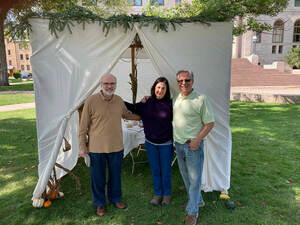
At a gathering held the day after erecting the sukkah, short blessings and prayers were shared while shaking the lulav — a combination of citron, palm, myrtle and willow branches representing plants found in the Middle East during Biblical times.
“The lulav is shaken in the cardinal directions as well as up and down, symbolizing the bond with the greater world and the greater cosmos,” Richman said.
Several passersby paused to observe the sukkah and were welcomed to participate while others enjoyed apple cider, snacks and fresh doughnuts.
“It is an opportunity to thank the Creator — God — for making it through another year while looking forward to a new year of good health, bounty and friendships,” said Richman. “The act of building the sukkah, decorating it and shaking the lulav deepens the meaning of the holiday through the movement of the body. It’s not just something one reads about.”
For Richman, it was very moving to build the sukkah on campus. “Notre Dame honors all religious traditions and our shared Judeo-Christian heritage. It gives us a way to share community both with ourselves and the broader Notre Dame community,” she said.
The event planners provided handouts explaining the blessing so that anyone could join in. As people walked by, curiosity pulled them in. This may be the first sukkah built on campus in more than 40 years, according to Richman. It took approximately three hours to put it together and to decorate it. The sukkah was left up for the weekend.
Building the structure in celebration of the holiday had been planned for 2020, but COVID restrictions delayed it until this year. “And much like the holiday it celebrates, erecting it this year left us with something to look back on and something to look forward to,” said Richman. “Celebrating with community members at our beautiful sukkah, we were filled with hope for a shana tovah u’metukah, a good and sweet new year.”
